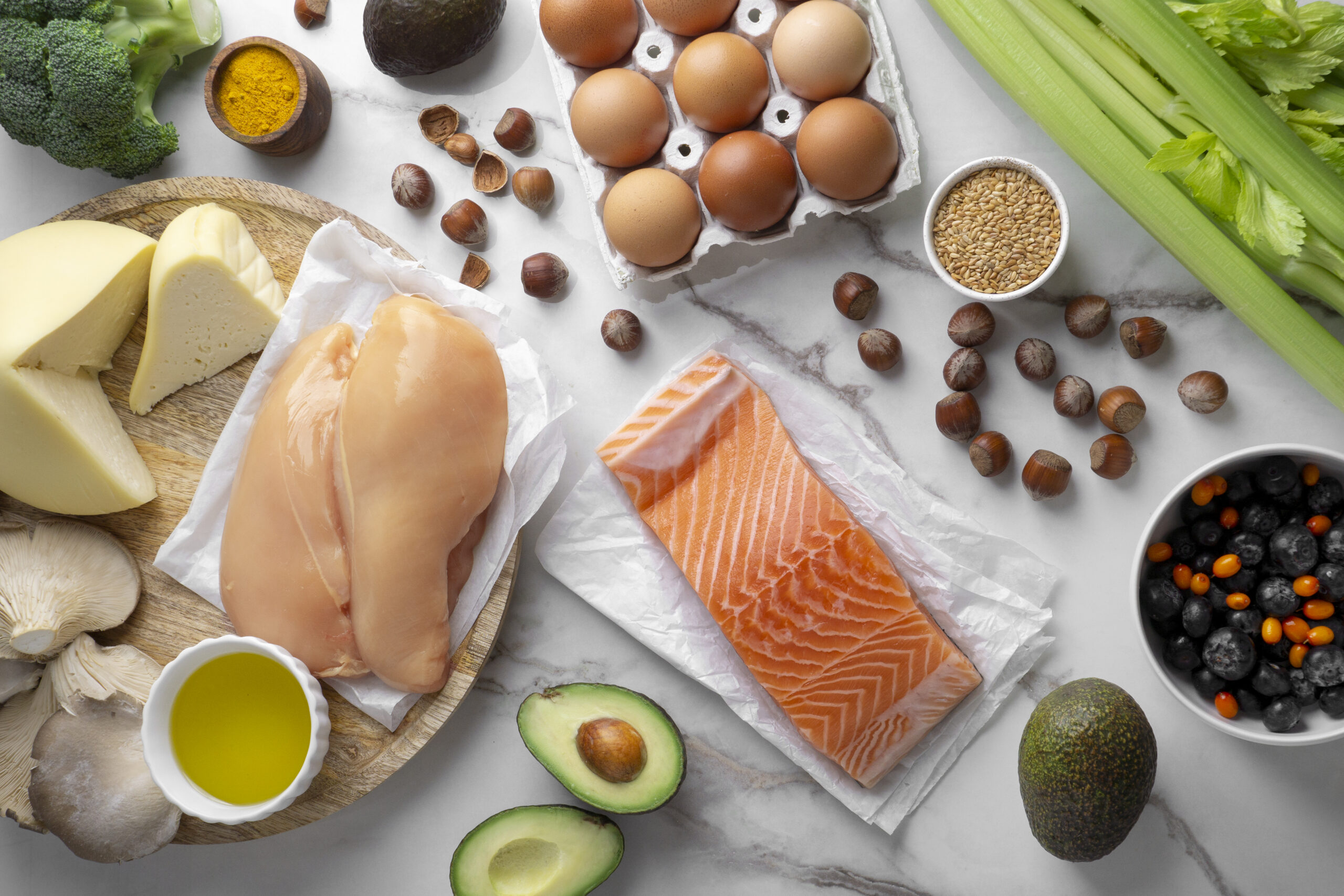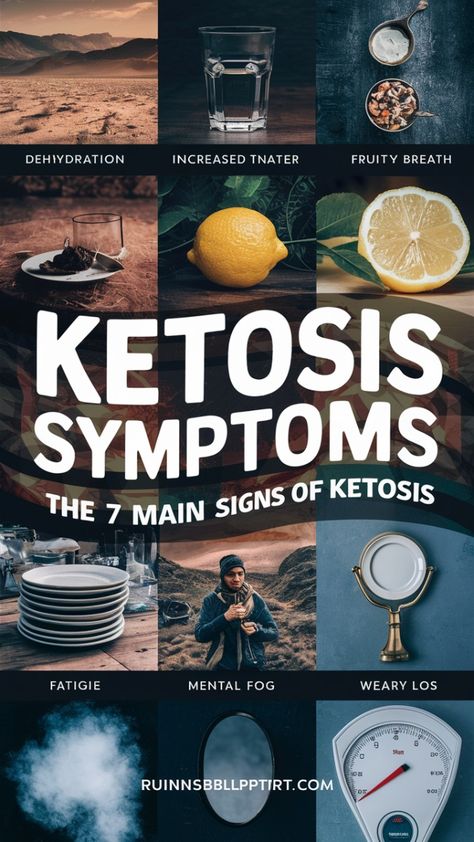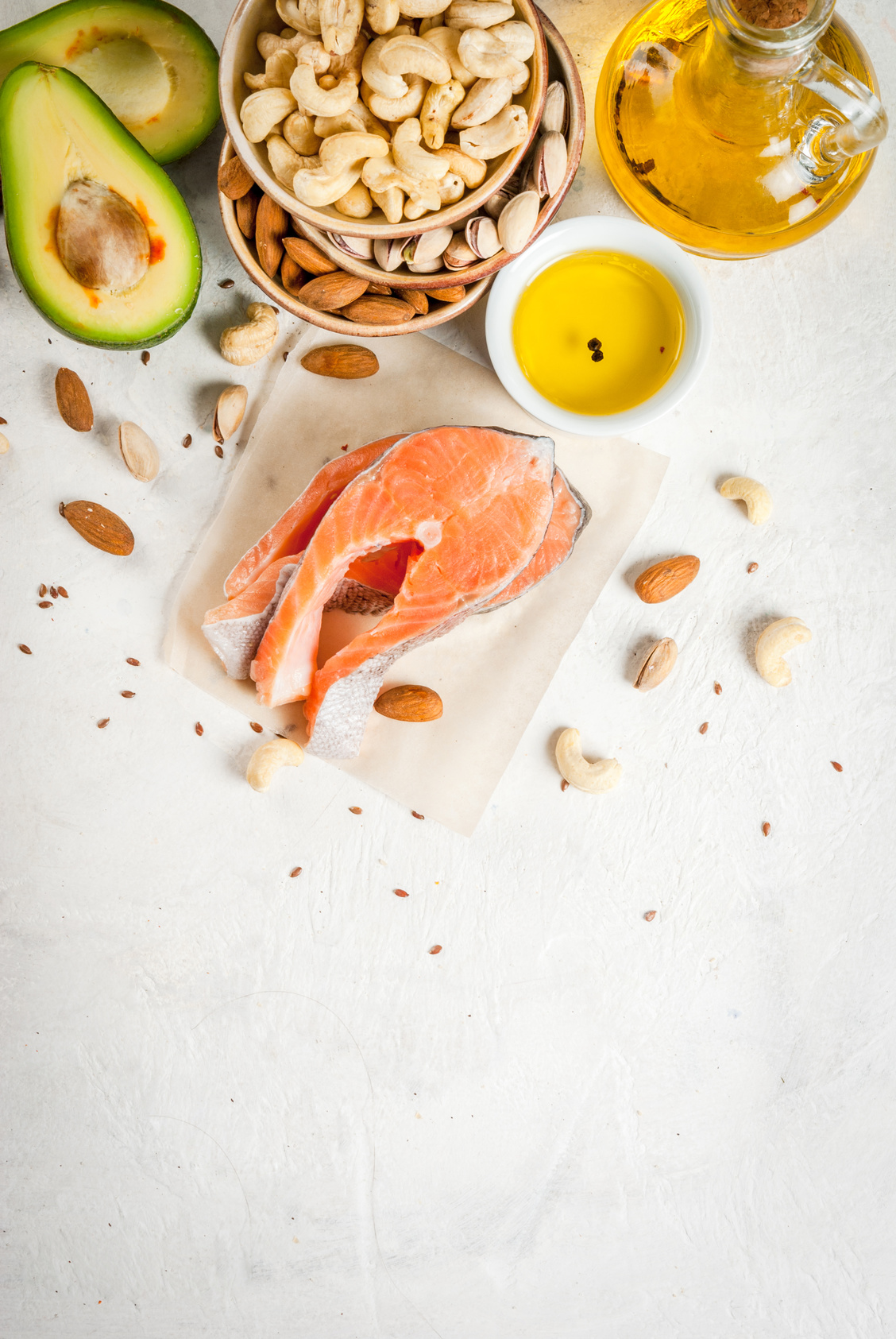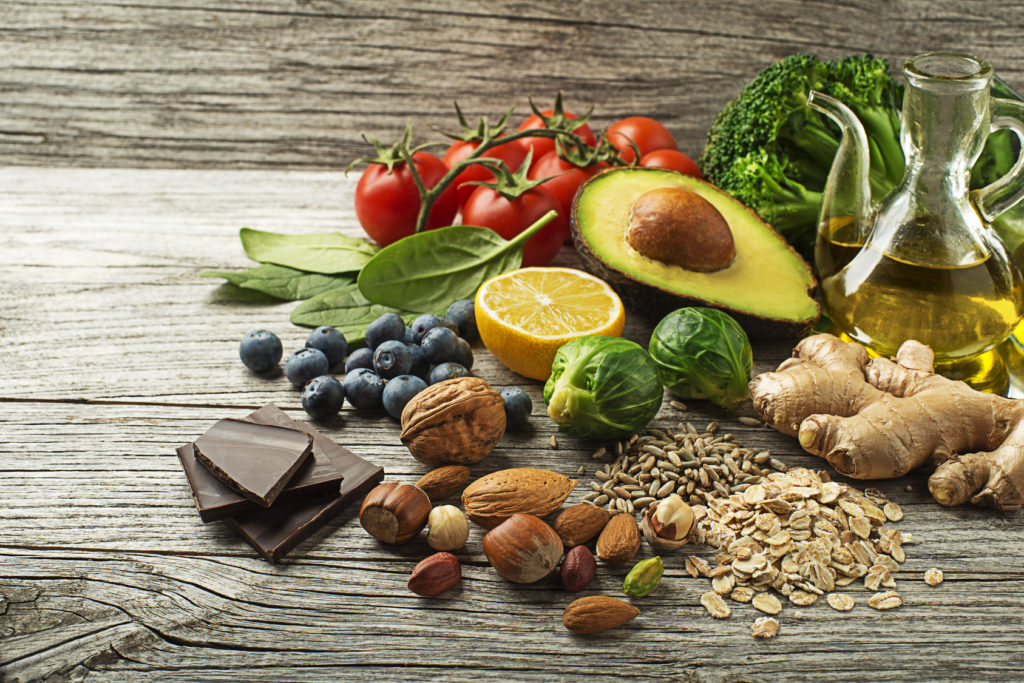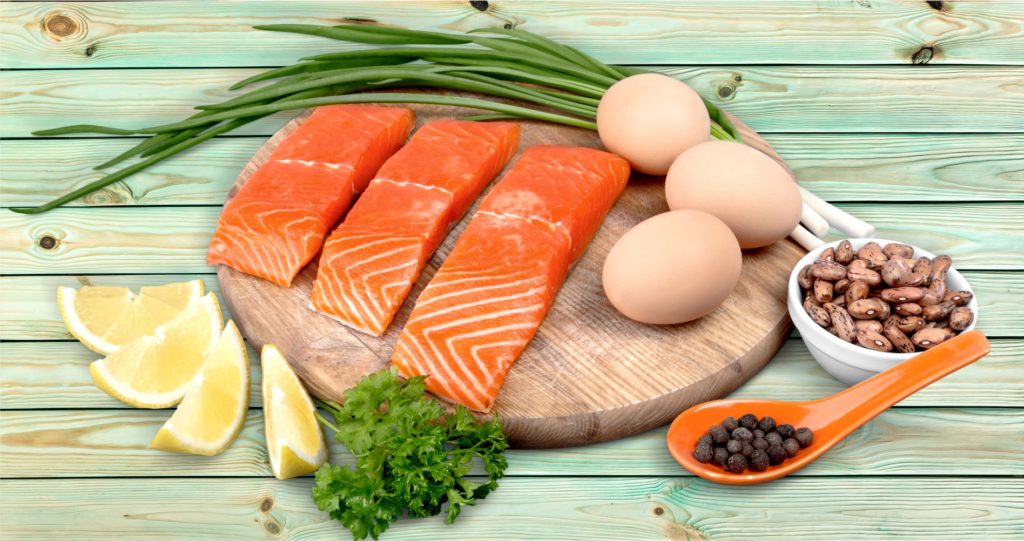The ketogenic diet is straightforward—you drastically cut carbs, and before you know it, your body shifts into fat-burning mode, known as ketosis.
But figuring out when you’re actually in this metabolic state? That can be the tricky part.
When I first started experimenting with keto to optimize my health and running performance, I was intrigued by the concept of ketosis.
It took some trial and error, but the benefits were undeniable once I found my groove.
In this article, I’ll share what I’ve learned about recognizing ketosis and the symptoms that show you’re on track.
What’s the Ketogenic Diet?
The keto diet is high in fat, moderate in protein, and very low in carbohydrates. Typically, it comprises 70-80% fat, 15-25% protein, and 5-10% carbs.
The goal? To push your body into ketosis.
To achieve this, most people must limit carbs to 10-30 grams daily. I’ve already written a full guide to the ketogenic diet as well as how to train for a marathon on keto. Feel free to read these guides at your own pace.
Now let’s talk more about ketosis.
What Is Ketosis?
Key-tow-sis is a metabolic state in which the body metabolizes fat instead of carbs to produce ketones, employed by our cells to provide energy to perform their normal function.
Under normal conditions, your body uses carbs to sustain its energy needs. But when you drastically cut your carb intake, ketones are produced by the liver and released into the bloodstream as a reaction to inadequate glucose in the body.
Technically, ketosis is attained when blood ketone levels are around 0.5 mmol/ L.
How to Get Into Ketosis
The best way to get into ketosis—and as fast as possible—is to eliminate all major carbohydrate sources in your diet, usually to less than 30 net grams of carbs per day.
The more restrictive your carb intake is during the early stage, the sooner your body enters ketosis. So it’s goodbye to bread, rice, pasta, peas, fruits, sugary drinks, chocolate, etc.
Instead, you’ll eat plenty of healthy fats, moderate amounts of lean proteins, and some vegetables. This first step seems brutal, but it’s worth every headache.
Here’s the full keto food diet list.
Note: Remember that 30 grams of carbs is the equivalent of 3 large carrots, one large banana, or two slices of white bread.
How Fast Can You Get Into Ketosis
If you’ve been on the low-carb, high-fat diet for at least a couple of weeks, then you should enter ketosis within three to four days—seven days max.
Most people can generally access light nutritional ketosis—about 0.6 to 1.0 mmol/L within two to three days. It often takes more than two weeks to get into optimal and steady ketosis of 1.5 to 3.0 mmol/L.
Research on Ketosis Symptoms: What the Science Says
Research published in the Journal of Nutrition and Metabolism found that approximately 30-40% of people starting a ketogenic diet report symptoms consistent with keto flu. These symptoms often include headache, fatigue, nausea, dizziness, and irritability. On average, these symptoms peak within the first 2-7 days and gradually improve as the body adapts to burning fat instead of carbohydrates.
Interestingly, research also shows that after the adaptation period, many people experience improved mental clarity and stable energy levels. A study in Frontiers in Psychology suggests that ketosis may help provide a steady fuel source for the brain, potentially improving focus and reducing the energy crashes common with high-carb diets.
How to Tell If You’re in Ketosis: 7 Key Symptoms
Wondering how to tell when your body has made the switch? Here are seven key indications that signal you’ve entered the fat-burning state:
1. Reduced Insulin Levels
As carbs decrease, so do insulin levels, which regulates blood sugar levels. When I cut carbs, I noticed fewer energy crashes, more consistent energy throughout the day, and even better mental focus. For people with blood sugar issues, ketosis can significantly improve insulin sensitivity.
Science backs this up.
According to research published in the Annals of Internal Medicine, diabetic subjects on a low-carb diet for two weeks normalized their glucose levels. They reduced average blood sugar by 30 mg/dl.
Do the following to ensure low sugar levels don’t interfere with your life.
- Have more meals. Plan to eat every four to five hours once you take your first few steps on the ketogenic path. This will help keep you satisfied and your blood sugar levels in check.
- Reach for mineral-rich drinks. Instead of drinking plain water, opt for mineral-rich drinks between meals. These include high-quality electrolyte beverages or organic broths.
- Have some Exogenous ketones. These are a great way to train your body to rely on ketos for energy before it’s efficient at producing ketones.
2. The Keto Flu
The dreaded keto flu—a term you’ve likely heard—hits hard in the early days of ketosis. Also known as “induction flu,” the keto flu mimics the signs of the flu. It consists of a bout of lethargy and flu-like symptoms experienced the first week or so as your body begins to make the transition from burning fat instead of glycogen.
Think of the keto flu as your body’s carbohydrate withdrawal syndrome.
When I started, I felt the keto flu within the first three days.
This is what I hated the most about the keto diet early on.
I remember it vividly. On day three or four, I got brain fog, and I was in a hazy state where I’d walk into a room and couldn’t remember why I’d gone in there in the first place.
It was really bad.
In most cases, the keto flu kicks at the 48-to-72-hour mark. Symptoms include:
- Headaches
- Lethargy
- Dizziness
- Sore throat
- Lack of concentration
- Brain fog or confusion
- Irritability
- Chills
- Trouble falling—or staying—asleep.
Fortunately, the symptoms are not permanent, and it’s a good sign that your body is now burning fat.
Once your body has adjusted, these usually resolve within a few days—often up to a week.
To ease the keto flu, drink plenty of water, increase your dietary fat intake, and consider opting for a sugar-free electrolyte drink.
3. Bad Breath
One of the first signs I noticed when I entered ketosis was a fruity or metallic breath odor—a common symptom caused by the ketone acetone being expelled through the breath.
Acetone is released in the liver and expelled via the breath. This is also a chemical used in producing nail polish removers and some paint thinners, and it is expelled through urine and breath.
Because of the same reason, some people may notice a slightly metallic, or even fruity, taste in their mouth.
While the bad breath may ruin your mood (or that of those you interact with), fortunately, it also indicates that your ketogenic diet is going well.
To mask this symptom, brush your teeth more regularly, add essential oils to water, mouthwash, or chew sugar-free mints.
Or, simply grin and bear it. It’s, after all, just a question of time as the stinks fades away.
4. Short-Term Fatigue
During the first few weeks—not days—you’ll feel less energy than usual when working out, especially when doing high-impact cardio sports, such as running.
Why?
The initial drop in performance is caused by the reduction in muscles’ glycogen stores, which is the primary and most efficient energy source for all forms of high-intensity training.
While the drop in energy output is a good sign of ketosis, it can be discouraging as it can negatively affect your workouts. It’s one of the main reasons beginners—especially the super active— quit the diet before fully keto-adapted.
On average, it may take 10 to 30 days before you’re in full ketosis. Complete keto-adaptation can take up to three months.
To help get over this initial hump, take electrolytes supplements to help replace those lost in droves.
As a rough guideline, aim for 3000 to 4000 mg of sodium, 1000 mg of potassium, and no more than 300 mg of magnesium daily.
What’s more?
Take it easy during the adaptation period. Reduce your training load. Use less weight, fewer reps, take longer breaks between sets, and reduce the length and intensity of your cardio sessions.
Add an extra rest day if you need to.
5. Digestive Issues
I should also warn that it’s common to experience digestive issues like constipation or diarrhea on keto. These unwanted side effects are likely the results of eating more healthy fats than your digestive system is used to dealing with.
Limiting carb intake removes a lot of fiber, such as fruit, grains, legumes, and cereals, which may result in constipation.
On top of that, revving up fat intake may cause diarrhea.
That’s why digestive issues are like rites of passage for keto initiates.
As we have seen, most of these issues should subside after the transition period.
To ease your digestive issues, do the following:
- Adding keto-friendly high-fiber foods.
- Consuming plenty of fiber from non-starchy, low-carb vegetables.
- Getting enough salt or magnesium.
- Drinking plenty of water.
- Cutting on dairy and nuts.
Keep in mind that some people have no trouble. So, just because you’re not suffering from any stomach issues doesn’t mean that the ketogenic diet isn’t delivering.
Everybody and every BODY is different. That’s why everyone’s digestive system may react differently to a drastic change in diet, such as cutting down on carbohydrates.
6. Reduced Appetite
One of the coolest perks of ketosis? You may find that your appetite decreases. Once I hit ketosis, I felt fuller for longer and didn’t need to snack as often. High-fat meals are incredibly satiating, and ketones can naturally suppress hunger.
So once you’re keto-adapted, expect long periods without feeling hungry. That’s why intermittent fasting is pretty common among established Keto’ers.
There are a few reasons why ketosis can tame your appetite. You’ll mainly consume healthy fats, lean proteins, and fibrous vegetables on the keto diet. These are the most satiating nutrients that affect appetite hormones, which tames your desire to eat.
Because of this, you’ll rarely feel hungry or need grazing or snacking throughout the day.
7. Increased Ketones
The main goal of the ketogenic diet, as previously stated, is to get your body to ramp up production of ketones.
Blood sugar levels fall, and the body releases fatty acids into the bloodstream.
Stay committed to the low-carb high-fat diet for a while, and ketones will be the main energy source.
Here’s the good news. You can easily measure ketone levels in the blood using a specialized meter. This meter measures your ketone levels by calculating the amount of beta-hydroxybutyrate (BHB), one of the three primary ketones released into the bloodstream once you reach full ketosis.
Technically, a blood ketone level of 0.5 mmol/L is the threshold for entering ketosis.
Various devices measure the presence of ketone bodies in the body, whether in the breath, urine, or blood. This provides an accurate biomarker of your level of ketosis.
According to most experts, measuring ketosis through blood is the most accurate, even though using a glucose meter is more expensive.
This is reliable because it measures endogenous (created by ketogenic eating, fasting, and exercise) and exogenous ketones, such as HVMN ketone.
Remember that this method can be expensive and invasive, requiring a small pinprick to draw blood from your finger. -That’s why most people will only perform one test per week or every other week.
If you’d like to put your ketosis doubts to rest by testing your ketones, Amazon has got what you need.
Managing Ketosis Symptoms
Here’s how I managed the initial symptoms of ketosis:
- Stay Hydrated: Drinking water and replenishing electrolytes became a daily priority.
- Gradual Transition: If you find the keto flu too intense, consider easing into it by reducing carbs more slowly.
- Add Fiber: Increasing fiber from low-carb veggies helped manage digestive issues.
- Take it Easy: During my first few weeks, I avoided pushing too hard in my workouts, giving my body time to adapt.
When to Seek Medical Help
While most keto symptoms are temporary, if you experience signs of severe dehydration or diabetic ketoacidosis (e.g., rapid breathing, nausea, confusion), it’s important to seek medical help. For most people, though, the keto flu passes after the first week.
Frequently Asked Questions
I know that you have more than one pressing question about ketosis. Let me address some of the most common concerns.
How long does ‘keto flu’ last?
Most people experience keto flu symptoms for 3-7 days as their body adapts to a low-carb, high-fat diet. Symptoms like headache, fatigue, and irritability typically improve within the first week.
To speed up recovery, focus on staying hydrated and increasing your intake of electrolytes—particularly sodium, potassium, and magnesium. Adding a pinch of salt to water or drinking electrolyte-rich broths can help reduce symptoms faster.
How can I prevent muscle cramps on keto?
Muscle cramps on keto are often due to low electrolyte levels, particularly magnesium. Consider taking a magnesium supplement or soaking in an Epsom salt bath, which allows magnesium to be absorbed through the skin. The Mayo Clinic suggests that moderate salt intake on a low-carb diet can be beneficial, especially during the initial keto adaptation phase.
Is it safe to exercise while adjusting to keto?
Yes, but take it easy during the first week of ketosis, as your body adjusts to burning fat for energy. Light exercise, like walking or gentle yoga, is generally fine and can even help reduce some keto flu symptoms. Once you feel more energized, you can gradually reintroduce higher-intensity workouts. Endurance athletes often benefit from a few weeks of adaptation before resuming intense training.
What foods should I eat to stay in ketosis?
Focus on high-fat, low-carb foods like avocados, eggs, leafy greens, fatty fish, and olive oil. Avoid starchy vegetables, grains, and sugary foods. Checking labels for carb content can help you stay within your daily carb limit.
The Conclusion
Ketosis symptoms vary from person to person. But all in all, chances are you’ll find that at least a few of the above signs of being in ketosis hold true for you.
Ultimately, if you’re applying the tenets of the ketogenic eating plan and stay consistent, you’ll, sooner or later, enter the state of ketosis.
The common thread in the above symptoms is that once your body makes the full transition, most—often all of—the symptoms should subside.
Once you make the full transition, your energy level will start to rise, and the keto flu is but a distance memory. Just be patient.
How long will that take depends on your particular case, genes, diet habits, activity levels, and age.
Just keep in mind that these symptoms do not affect everyone, so if you’re still hesitant about giving keto a shot, try it and see for yourself.

